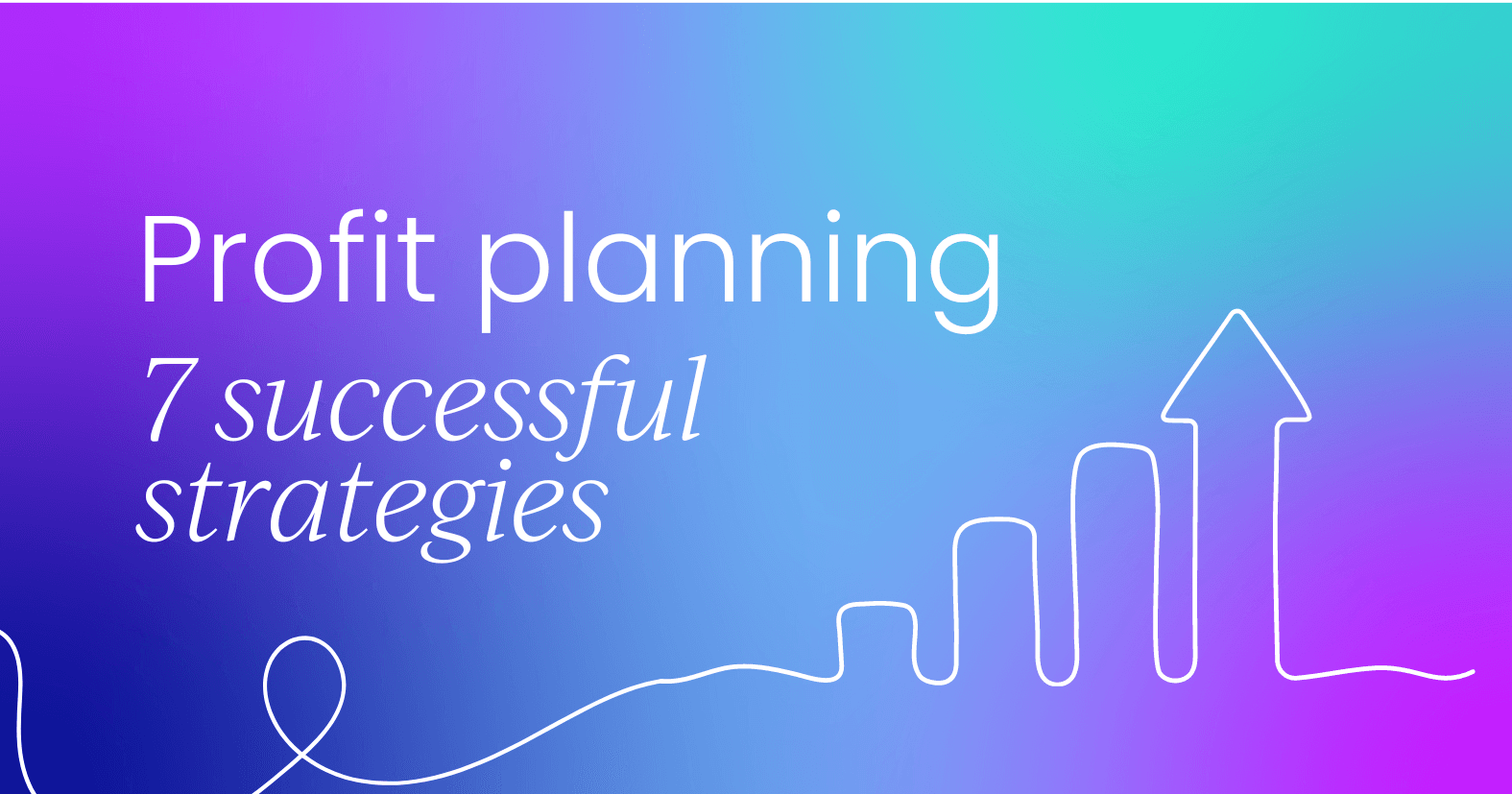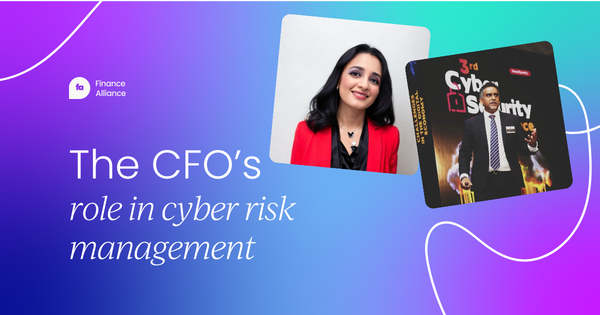Cyber risk has evolved into a defining strategic issue. The famous British proverb, “To be forewarned is to be forearmed,” aptly captures the mindset that finance leaders must adopt.
Cyber incidents can unfold within minutes and reverberate globally, so the Chief Financial Officer (CFO) holds an increasingly vital role, one that extends beyond financial oversight to shaping the organization’s resilience and long-term sustainability.
Cybersecurity can no longer be viewed as an isolated technical function. Instead, it demands alignment between financial stewardship, operational control, and strategic foresight.
As Aarti Ajay notes, the conversation around cyber risk is ultimately about how CFOs can leverage their strategic position to balance cost with risk, transform vulnerabilities into strengths, and build a culture of preparedness across the enterprise.
Empowering the CISO: The strategic partnership
The relationship between the CFO and the Chief Information Security Officer (CISO) sits at the heart of effective cyber risk management.
Over the past two decades, the CISO’s role has evolved dramatically, from a buried technical position within IT to one of the most strategically important roles in any organization.
Yet, as Ameet Jugnauth observed, the position still “hasn’t quite found its place.”
He reflected on the range of reporting lines he has encountered: CISOs reporting to COOs, CIOs, CROs, and even CFOs. Among these, he described the CFO relationship as “one of the most effective models,” offering both business alignment and accountability.
The CFO’s operational view of the organization makes them an ideal counterpart to the CISO’s security mandate.
However, empowerment doesn’t simply mean allocating larger budgets. As he emphasized:
“Empowering your CISO doesn’t mean giving them a blank cheque; it means helping them connect cybersecurity with the business agenda.”
CFOs can use their influence to give CISOs a platform, ensuring security strategies are integrated into decision-making and framed in business terms rather than technical jargon.

From technical control to business enabler
The CFO’s role in cybersecurity is about enabling better decision-making, not micromanaging technology. One of the most impactful ways finance leaders can contribute is by asking a deceptively simple question: What are we trying to protect?
Jugnauth explained that many CISOs present long lists of controls without linking them to business priorities. The CFO’s perspective helps ground those conversations in reality.
“What’s important in banking isn’t the same as what’s important in manufacturing or insurance. Each business is different, so the controls should be too.”
The key is to view cybersecurity as a form of business risk, one that can be assessed, prioritized, and mitigated based on the organization’s objectives and risk appetite.
Aarti Ajay added that finance leaders play a vital role in cultivating a culture of awareness and accountability: by fostering an understanding that cybersecurity is not just the responsibility of IT, but of everyone across the organization.
The CFO’s influence on the security agenda
CFOs, by virtue of their role, have significant influence over how security is perceived and prioritized.
In most organizations, they work closely with CEOs and COOs, controlling the operational and financial levers that drive strategic direction.
This gives them the power to ensure cybersecurity isn’t sidelined as a compliance function but embedded into business planning and resource allocation.
As Jugnauth noted:
“In every organization I’ve worked in, it’s really the CFO that’s in charge; the CEO is often the outward face, but it’s the CFO who holds the strings to how things actually get done.”
That influence can be used to help the CISO gain visibility, integrate security metrics into financial reporting, and align cyber risk management with broader business goals.
This collaboration also opens space for constructive challenge. CFOs should feel empowered to ask security leaders:
- Why do we need this control?
- What’s the return on risk reduction?
- What are we protecting, and how much will it cost us if we fail to do so?
These questions ensure cybersecurity programs are efficient, focused, and transparent.

Cyber Risk Quantification: Turning risk into numbers
One of the most transformative tools bridging finance and cybersecurity is Cyber Risk Quantification (CRQ).
Jugnauth described CRQ as a “contemporary discipline” that translates technical vulnerabilities into monetary impact, giving executives a clearer picture of risk exposure.
The process involves modeling potential incidents and estimating their financial implications, much like capital risk modeling in banking.
By analyzing past data, external benchmarks, and organizational exposure, leaders can assign probable costs to different cyber events. For example, what a ransomware attack might cost in downtime, data loss, and reputational harm.
“Instead of hearing, ‘This could be really bad,’” Jugnauth says, “the CFO hears, ‘If this happens, it will cost us a million pounds.’ That’s a language finance leaders understand.”
Frameworks such as FAIR (Factor Analysis of Information Risk), developed by Jack Jones, Chairman of the FAIR Institute, have gained traction for structuring these assessments.
They allow organizations to perform simulations (including Monte Carlo modeling) to calculate ranges of potential losses and assess where additional investment will have the greatest effect.
Ajay emphasized that this quantitative approach helps bridge the gap between finance and security. It allows CFOs to make informed decisions about budget allocation while holding CISOs accountable for demonstrating measurable impact.

Primary vs. layered controls: The “domino effect” in defense
Effective cybersecurity relies on multiple layers of defense. Both experts highlighted that no single control can prevent every attack.
Instead, organizations must create systems where, if one layer fails, another intercepts the threat. Jugnauth compared this to a domino rally:
“At some point, a domino is gonna fall over. But, if you can put the stopper in to prevent the chain reaction occurring, that's real cyber risk management.”
Ajay noted that while layered controls are essential, organizations must also ensure their primary controls (those first lines of defense) are well established.
Smaller organizations often over-rely on compensating or secondary measures due to limited resources, but over time, they must mature their foundational safeguards.
From Jugnauth’s perspective, resilience is as much about response as prevention. “Prevention is better than cure,” he said, “but we all get sick. What matters is how quickly you recover.”
That analogy captures the modern security posture: accepting that incidents are inevitable but focusing on rapid detection, containment, and recovery to minimize damage.
Adapting to technological change and risk appetite
As organizations transition from on-premises infrastructure to cloud environments, their risk appetites and control strategies shift.
Jugnauth shared examples from his experience in banking: institutions with full control over on-prem systems often accepted a higher rate of incidents because they could respond swiftly.
However, as they moved to the cloud (where control was more distributed) they needed stronger preventive measures and greater assurance from third-party providers.
This dynamic underscores the CFO’s need to understand how technology transformation alters both risk exposure and cost structure.
Cloud adoption, automation, and digital integration all require continuous recalibration of cyber investments and insurance strategies.
The role and reality of cyber insurance
Cyber insurance has emerged as a critical yet complex risk mitigation mechanism. As Jugnauth explained, it is “an impact-reducing control,” designed to cushion financial losses rather than prevent incidents.
Over time, the product has matured, with insurers becoming more discerning about what they underwrite. “It’s becoming a necessity rather than an option,” he said, “but it’s getting narrower, more specific to ransomware or malicious breaches.”
However, he cautioned that obtaining coverage is far from straightforward. Companies that experience breaches often struggle to get reinsured, and remediation costs can be steep.
“The amount you spend to become insurable again is often higher than what it would have cost to fix your control environment in the first place.”
Ajay added that insurance should never be treated as a replacement for governance and readiness:
“Controls are never perfect, but you need to build maturity, both in primary and layered defenses, so you can demonstrate that you’re managing risk responsibly.”
Both agree that insurers increasingly expect evidence of structured control environments, incident response planning, and continuous monitoring before providing coverage.
Without these, payouts may be denied, similar to a homeowner failing to lock their door before a break-in.
Incident preparedness: From detection to response
Managing cyber risk effectively means preparing for the inevitable. Both Ajay and Jugnauth stressed that cyber incidents are not a matter of if but when. What differentiates resilient organizations is their ability to detect and respond swiftly.
Ajay pointed out that incident detection and response maturity are the true indicators of readiness. “It’s not about whether you were breached, it’s about how fast you detected it,” she said.
Jugnauth echoed this, explaining that even with advanced preventive controls, “something will always get through.”
Organizations should therefore focus on shortening the time between detection and containment, ensuring that a single compromise doesn’t escalate into a full-scale crisis.
Integrating cyber risk into financial and strategic planning
Digital transformation brings both opportunity and exposure. As organizations evolve, CFOs must ensure cyber risk management is woven into financial and strategic planning, not treated as an afterthought.
This includes engaging CISOs early in technology initiatives, assessing risk-adjusted return on investment, and maintaining flexibility in budgets to respond to emerging threats.
Jugnauth recommends that CFOs “engage your CISO and ask: What are the consequences if we don’t do this?”
Such dialogue forces alignment between financial decisions and operational risk tolerance. CRQ methodologies can support this by quantifying potential impacts and ensuring resources are allocated efficiently.
Ajay adds that bridging skills gaps is essential to sustaining this integration. Both finance and technology professionals must understand each other’s disciplines, enabling data-driven, risk-aware collaboration that strengthens long-term resilience.
The CFO as a catalyst for cyber resilience
Cybersecurity today is inseparable from financial performance. In an environment where a cyber incident can disrupt operations, damage reputation, and erode shareholder confidence, CFOs are emerging as pivotal champions of resilience.
By empowering CISOs, adopting risk quantification, and embedding security considerations into financial decision-making, CFOs can transform cybersecurity from a reactive safeguard into a proactive value driver.
As Ameet Jugnauth summarized, cyber risk management is not about achieving perfection but about managing trade-offs intelligently. And as Aarti Ajay concluded, preparedness, not panic, defines the difference between vulnerability and resilience.
Ultimately, the CFO’s role in cyber strategy is not optional. It is central to sustaining trust, ensuring operational continuity, and securing the organization’s future in a world where digital risk and business risk are one and the same.
Insights from a conversation between Aarti Ajay, Director of Cyber Security and Audit Consultant at A2A Secure Edge Consulting and Ameet Jugnauth, Risk Director - Executive Risk Partner (Technology and Cyber Risk) at Swift, from the CFO Summit London.
Find the full convo on demand with our Pro and Pro+ membership.
Join our Slack community for a space where you can connect with key leaders in the finance world, get answers to your pressing questions, get advice or inspired by success stories, and more.




 Follow us on LinkedIn
Follow us on LinkedIn







